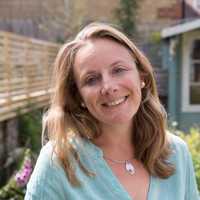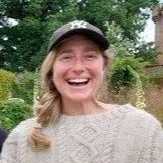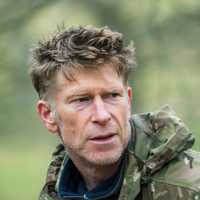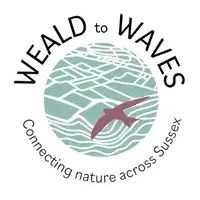Gardens & Greenspaces
Gardens are stepping stones across a fragmented landscape. Join us and join the dots.
Did you know that gardens make up the largest block of land in the Weald to Waves corridor? When we add in our parks and playgrounds, orchards and allotments, balconies and verges, this amounts to more land than Ashdown Forest. What an extraordinary call to action for a nation of gardeners!
To harness this wonderful opportunity for nature, Weald to Waves has launched a Gardens and Greenspaces Network to connect both people and habitats across our fragmented Sussex landscape.
Pledged land. Practical action.
Beneath our patios and goalposts, our gardens and parks are part of ancient ecosystems. They can provide crucial stepping stones for pollinators, small mammals, amphibians and birds in a landscape that's largely given over to human food production. Without swift action, we will continue to see a free fall in the diversity and abundance of nature across the UK, and the loss of all the ecosystem services they provide us.
This is not about abandoning our gardens or designing ourselves out of our own outdoor spaces, but rather working with nature to create resilient and naturally beautiful gardens that offer a haven for wildlife alongside our social and cultural lives.
The UK has made a global commitment to protect 30% of our national landscape for nature. By protecting less than a third of our gardens and greenspaces for wildlife, we can lead from the ground up and put that goal into action. From creating ponds to building log piles, leaving wild edges and planting native species, there are plenty of ways to transform your outdoor space into a thriving ecosystem for wildlife.
Gardens
Village Greens
Playgrounds
Parks
Verges & Footpaths
Allotments & Veg Gardens
Churchyards & Burial grounds
Woodland
The collective power of our gardens and greenspaces is huge and if together we put nature at the forefront of our actions, it will benefit both us and our vital ecosystems, now and into the future.
Benefits of joining Gardens & Greenspaces
We will be on hand with resources, training, learning exchanges and events, as well as a new toolkit to help you assess the current state of health for nature in your garden. This will help us track the impact of the changes made in gardens along the corridor route.
Not in the corridor? Don't worry! Our blog and newsletter will be stacked with advice and support for gardeners, growers and greenspace stewards, wherever you are.
Register your interest below to receive further information on joining the Gardens & Greenspace network and the opportunities that membership will bring, including:
Practical Tips
Events and Networking
Data and Monitoring
Funding Opportunities
Weald to Waves Map
Community Champions
Gardens & Greenspaces Ambassadors
We welcome our first Gardens & Greenspaces Ambassadors who will be sharing their knowledge and expertise with members:

Kate Bradbury - Garden & Greenspace Ambassador
Author & Journalist, Wildlife Gardening

Suzi Turner - Garden & Greenspace Ambassador
Deputy Head Gardener, Knepp Estate


